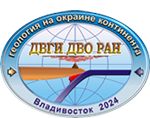Metalliferous coal deposits in East Asia (Primorye of Russia and South China): A review of geodynamic controls and styles of mineralization Популярные
Число скачиваний: 2626
Dai_et_al_2016.pdf
Shifeng Dai, Igor Yu. Chekryzhov, Vladimir V. Seredin, Victor P. Nechaev, Ian T. Graham, James C. Hower, Colin R. Ward, Deyi Ren, Xibo Wangl.
Gondwana Research
Metalliferous coal deposits, mainly hosting Zr(Hf)–Nb(Ta)–REE and U(Mo,Se)–REE ores, in East Asia (Primorye of Russia and South China) primarily result from the evolution of plumes ascending from deep mantle and/or asthenospheric flows, both of which incorporate some reworking of the continental crust. This mantle–crust interaction not only led to coal-basin formation but also played a significant role in extensive volcanism and ore-generating hydrothermal activity. Three mineralization styles are identified in these deposits: tuffaceous, hydrothermal-fluid, and mixed tuffaceous–hydrothermal types. The tuffaceous Zr(Hf)–Nb(Ta)–REE deposits have source magmas with an alkali basalt composition, although felsic, mafic, and intermediate types of tuffaceous horizons have been identified in the study area. The mineralization occurred not only in the coal but also in the host rocks, and not only during peat accumulation but also during the later stages of coal development (including coalification and late epigenetic processes). Rare metals in the metalliferous coal deposits are generally either associated with clay and organic matter or occur as secondary minerals derived from decomposition of the primary magmatic rare-metal bearing minerals (e.g. Nb-bearing rutile) under the influence of organic acids and hydrothermal fluids.
https://doi.org/10.1016/j.gr.2015.07.001







